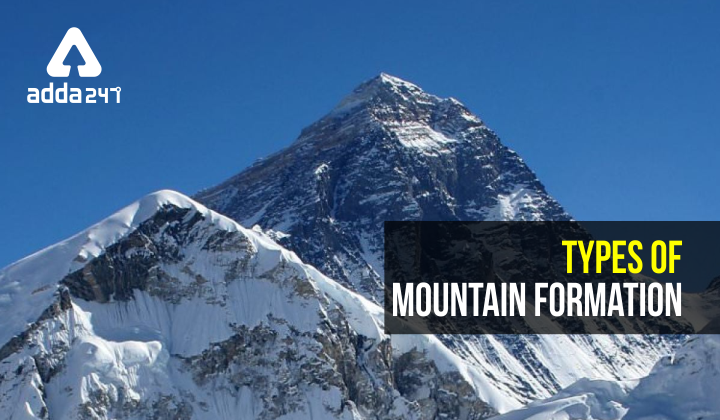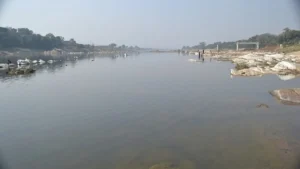Mountain Formations
The formation of the mountain is a geological process that is associated with the large-scale movement of the Earth’s crust. The process of mountain Formations includes faulting, folding and volcanic activities. The formation of mountains leads to the formation of five types of mountains, volcanic mountains, Fold mountains, residual, fault-block mountains, and dome mountains. In this article, we will discuss the different types of mountains and their formation.
World Largest Freshwater Lake
Buy Prime Test Series for all Banking, SSC, Insurance & other exams
Types of Mountains
- Volcanic mountains- When the tectonic plates of the earth’s crust move it creates Volcanoes, which later erupt and form mountains. There are two types of volcanic mountains namely, composite cones or Stratovolcanoes and shield volcanoes. Shield volcanoes have a gentle slope cone because of the low viscosity of the emitted material, for example, Mauna Loa with a slope of 4° -6°. The composite cones or Stratovolcanoes have deep slopes and are steeper because of the high viscosity of the emitted material, about 33° -40°, for example, Vesuvius and Mount Fuji
- Fold Mountains- When the tectonic plates or earth’s crust collide and subducts or ride one over the other, the plates fold and both the tectonic plates are pushed together forming mountains. The majority of continental mountains are formed due to folding and all are types of fold mountains. Examples of fold mountains are Balkan Mountain and Zagros Mountain.
- Residual Mountains- Residual mountains are formed by the erosion of elevated areas. The Balkan Peninsula is an example of a Residual Mountain.
- Block mountains- When large areas of earth or blocks of earth are broken vertically or horizontally it is from block mountains. There are two types of blocks mountain uplifted blocks and lowered blocks. These are called Horsts and Graben respectively. These are also known as Fault-Block mountains because these mountains are formed by the process of faulting.
- Dome mountains- The dome mountains are formed when a large amount of magma floats up to the crust from beneath and pushes the rocks on the surface, it forms round swelling in the crust. The magma is hot and in globs, there it makes the rock round. When the magma cools down the rock remains in a dome shape.
FAQs related to the formation of mountain
1. What are the types of mountains?
Ans. The types of mountains are volcanic mountains, fold mountains, block mountains, dome mountains, and residual mountains.
2. What is meant by Mountain formation?
Ans. Mountain Formations refers to the geographical process of formation of the mountains due to the movement of Earth’s crust.
3. What are some examples of the mountains formed by volcanoes?
Ans. Mount Kilimanjaro is an example of a volcanic mountain.
Find More Miscellaneous News Here




 Which Crop is known as the King of Oilse...
Which Crop is known as the King of Oilse...
 Which River is known as the Gold River o...
Which River is known as the Gold River o...
 MoSPI Launches New Logo and Mascot ‘Sank...
MoSPI Launches New Logo and Mascot ‘Sank...







